New Additions
Spring in Maryland. Last updated: 4/30/2013.
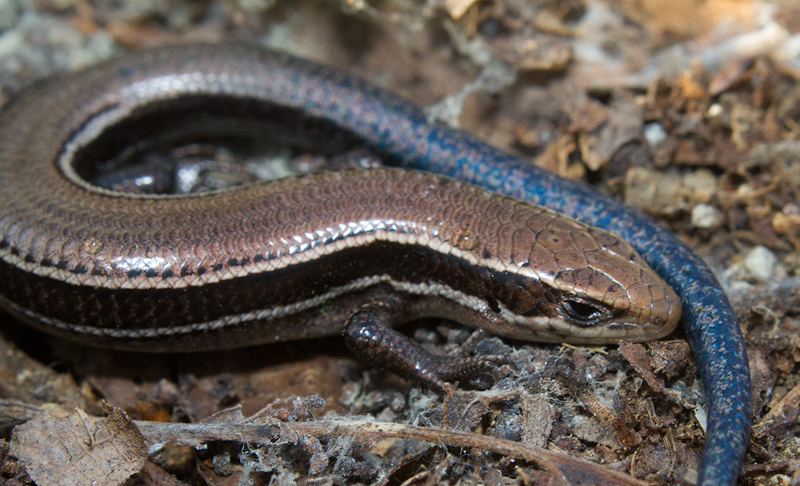
Above: A highly state rare Coal Skink found in Allegany Co., Maryland (4/25/2013).
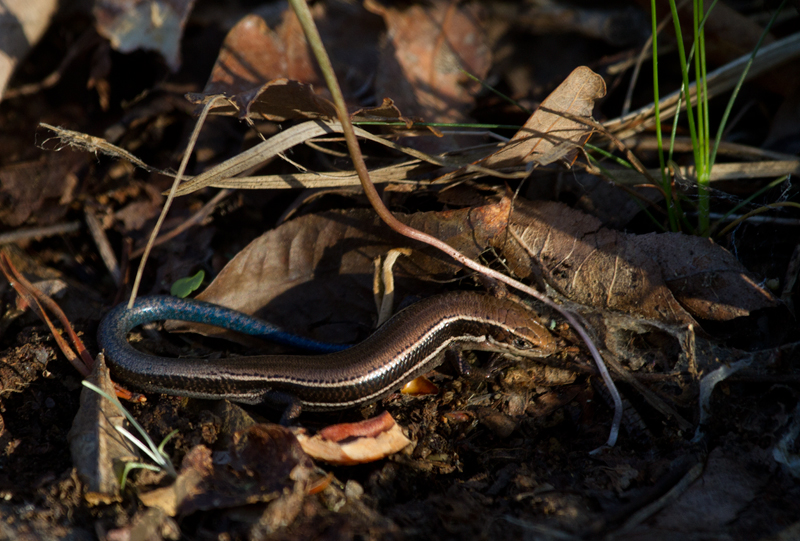
Above: A Coal Skink found in Allegany Co., Maryland (4/25/2013).
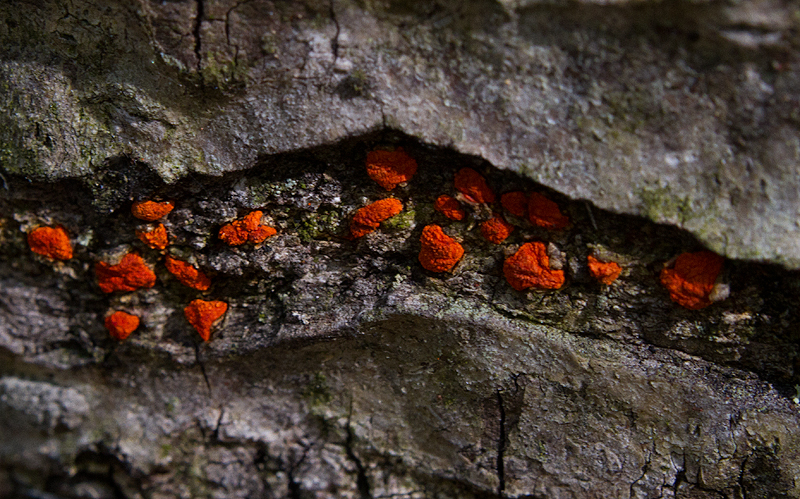
Above: Coral Spot Fungus found during the Chino Farms BioBlitz (4/27/2013). Identified to genus by Lance Biechele, but requires microscopic details.
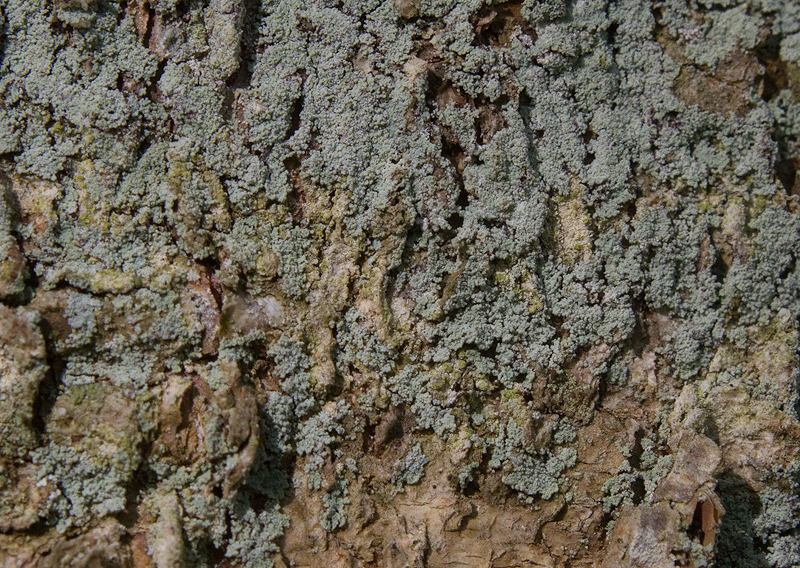
Above: Lepraria incana found during the Chino Farms BioBlitz (4/27/2013). Identified by Lance Biechele.
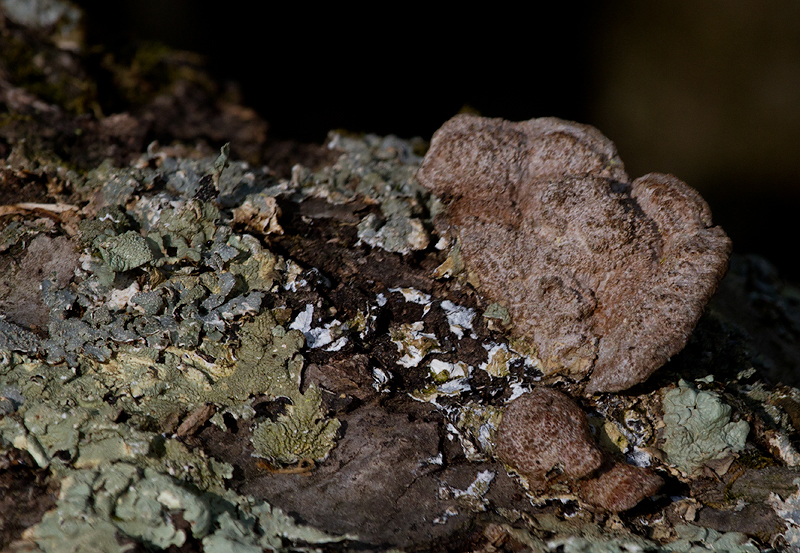
Above: Mustard-yellow Polypore found during the Chino Farms BioBlitz (4/27/2013). Specimen identified by Lance Biechele. Diagnostic photo would need to show pores.
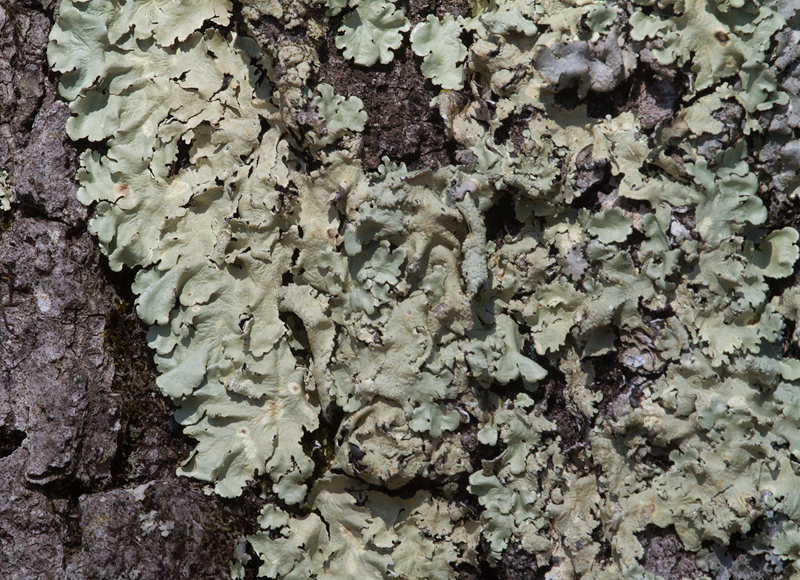
Above: Flavoparmelia caperata in Green Ridge State Forest, Allegany Co., Maryland (4/27/2013). Identified by Lance Biechele. Note the lack of white dots. Underside is black.
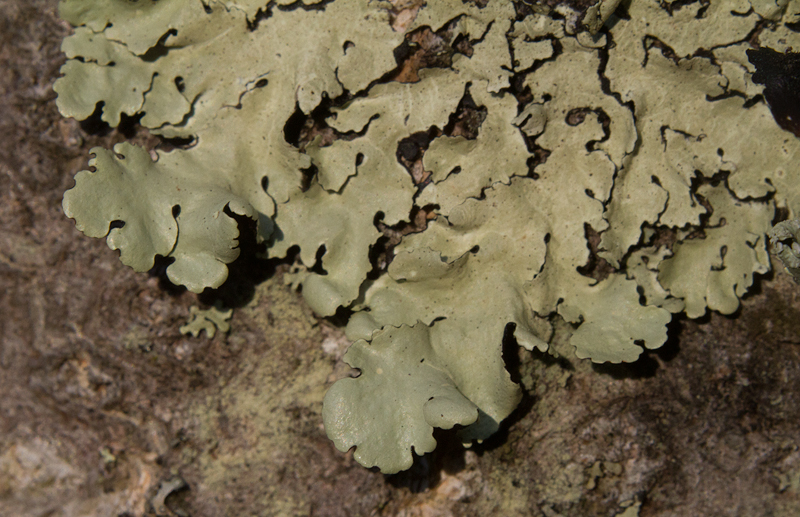
Above: Flavoparmelia caperata in Green Ridge State Forest, Allegany Co., Maryland (4/27/2013). Identified by Lance Biechele. Note the lack of white dots. Underside is black.
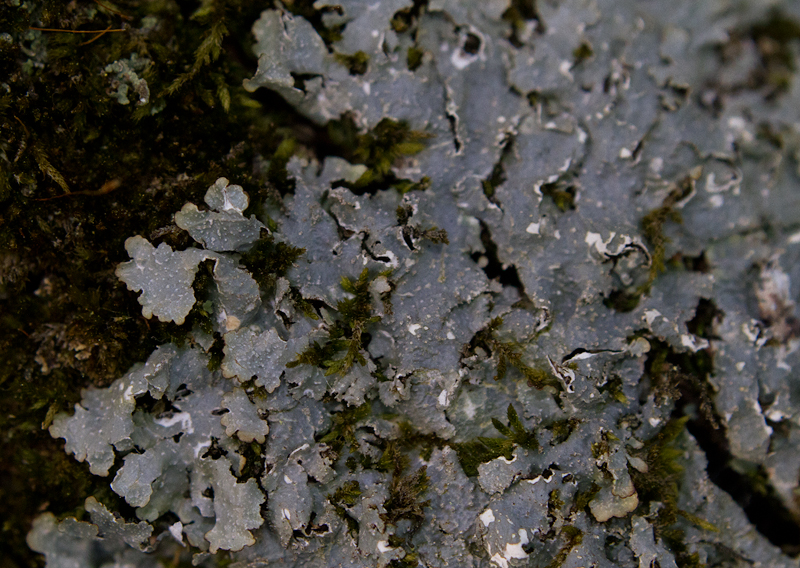
Above: Rough Speckled Shield Lichen (Punctelia rudecta) found during the Chino Farms BioBlitz (4/27/2013). Identified by Lance Biechele. Note the white dots. Underside is not black.
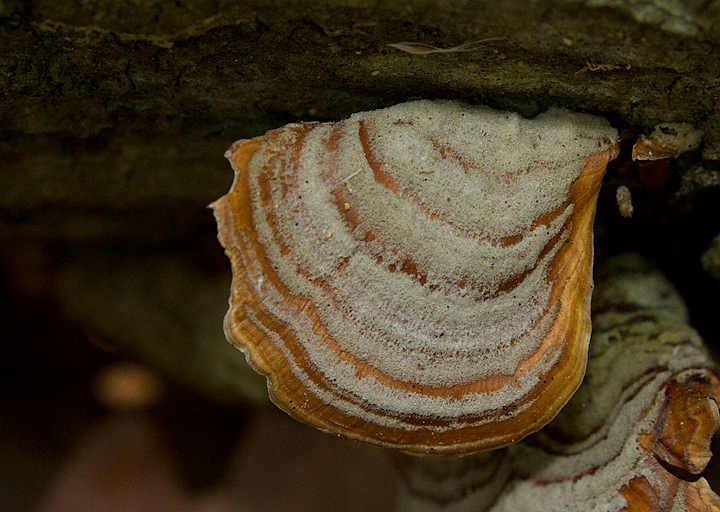
Above: False Turkey Tail found during the Chino Farms BioBlitz (4/27/2013). Identified by Lance Biechele. Noted paper thin quality and plain light underside.
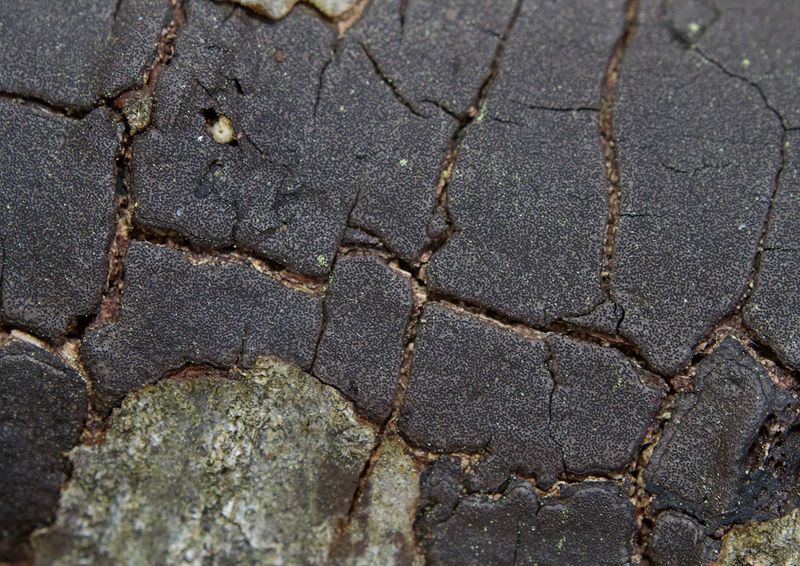
Above: Diatrype stigma found during the Chino Farms BioBlitz (4/27/2013). Identified by Lance Biechele.
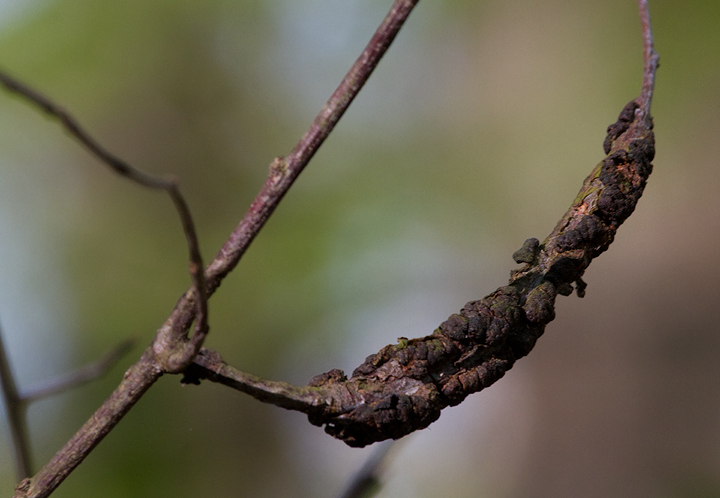
Above: A Cherry Knot Gall (Apiosporina morbosa) found during the Chino Farms BioBlitz (4/27/2013). Identified by Lance Biechele.
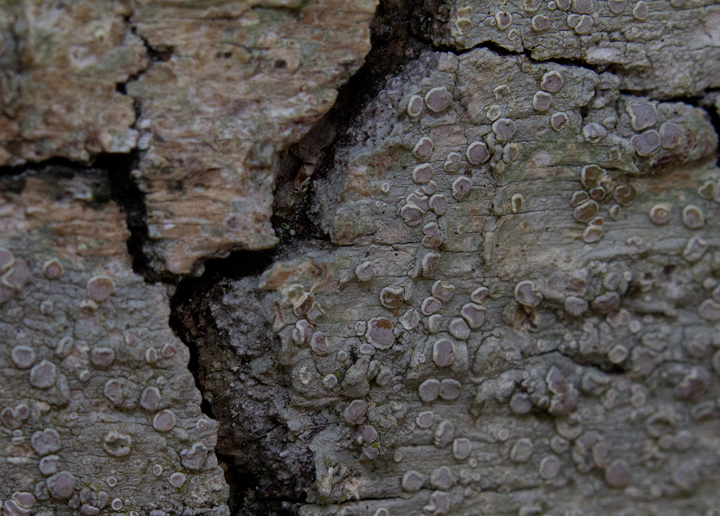
Above: Ochrolechia trochophora found during the Chino Farms BioBlitz (4/27/2013). Identified by Lance Biechele. KC+ test was red.
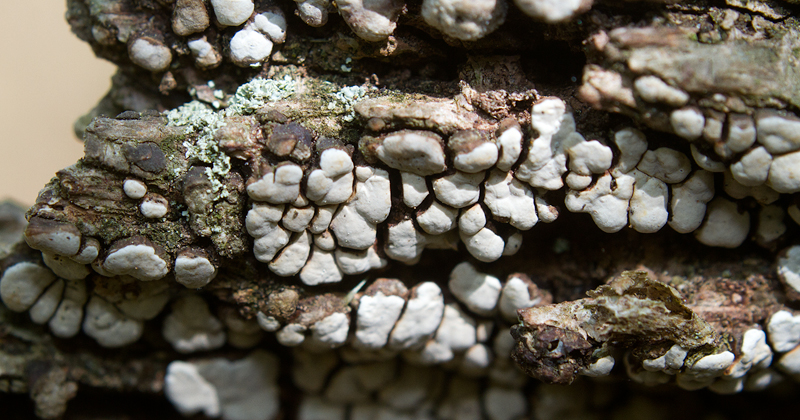
Above: Ceramic Parchment (Xybololus frustulatus) found during the Chino Farms BioBlitz (4/27/2013). Identified by Lance Biechele.

Above: Hydnochaete olivaceum found during the Chino Farms BioBlitz (4/27/2013). Identified by Lance Biechele.
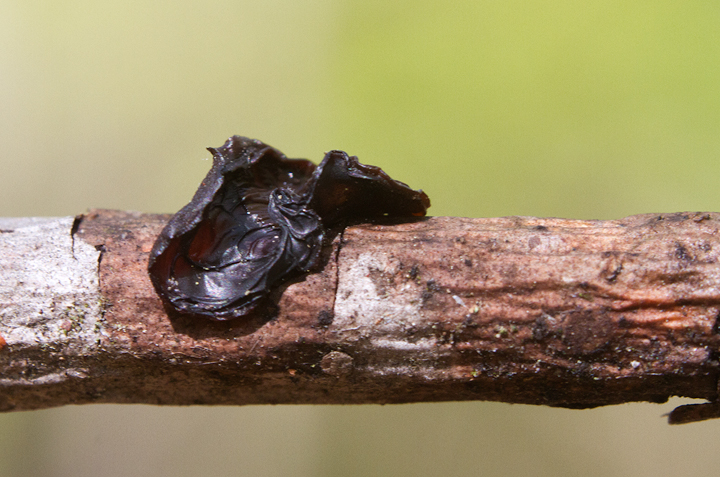
Above: Amber Jelly Roll (Exidia recisa) found during the Chino Farms BioBlitz (4/27/2013). Identified by Lance Biechele. Spores sample confirmed genus.
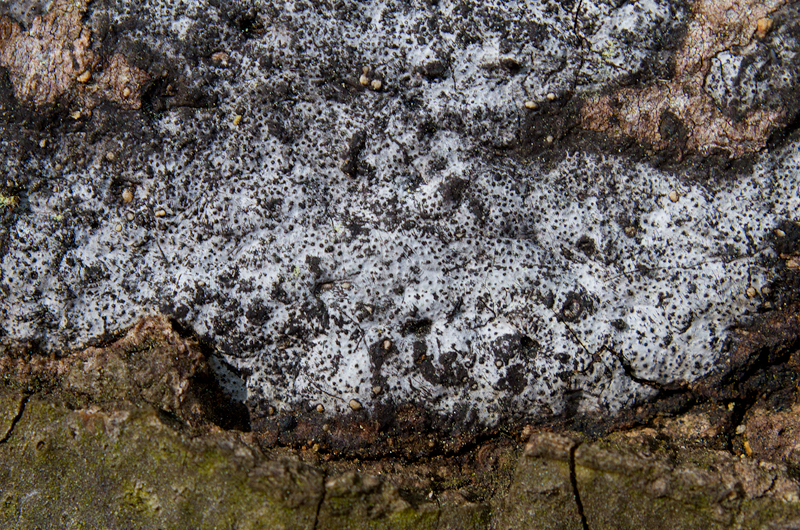
Above: Biscogniauxia atropunctata found during the Chino Farms BioBlitz (4/27/2013). Identified by Lance Biechele. Anamorph of Diaptera stigma.
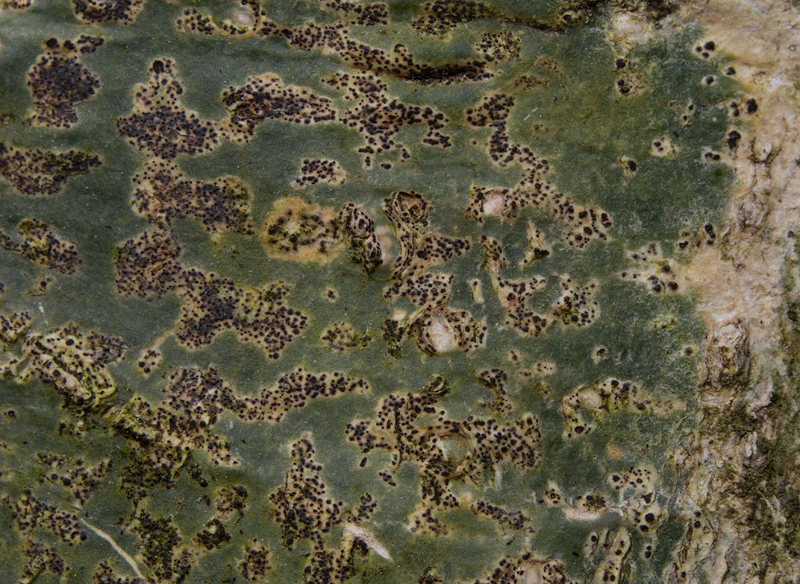
Above: Trypethelium virens found during the Chino Farms BioBlitz (4/27/2013). Identified by Lance Biechele.
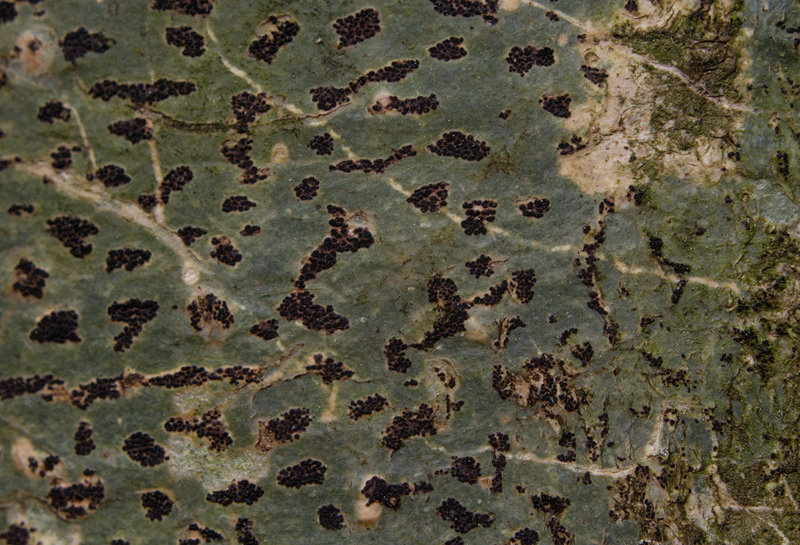
Above: Trypethelium virens found during the Chino Farms BioBlitz (4/27/2013). Identified by Lance Biechele.
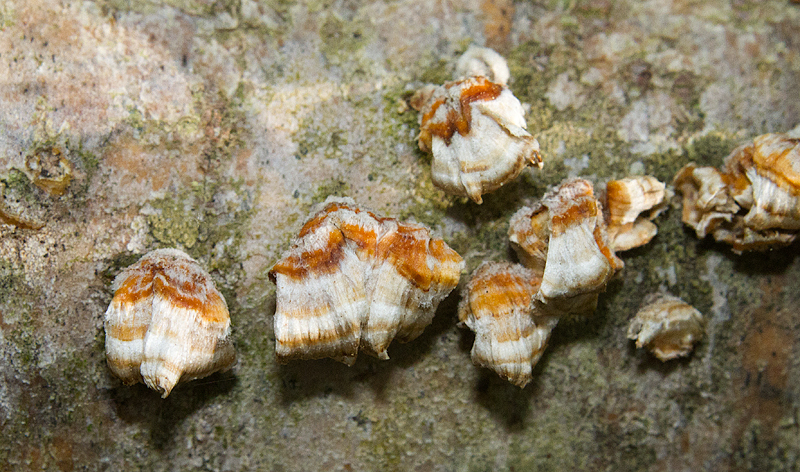
Above: Crowded Parchment (Stereum complicatum) found during the Chino Farms BioBlitz (4/27/2013). Identified by Lance Biechele.
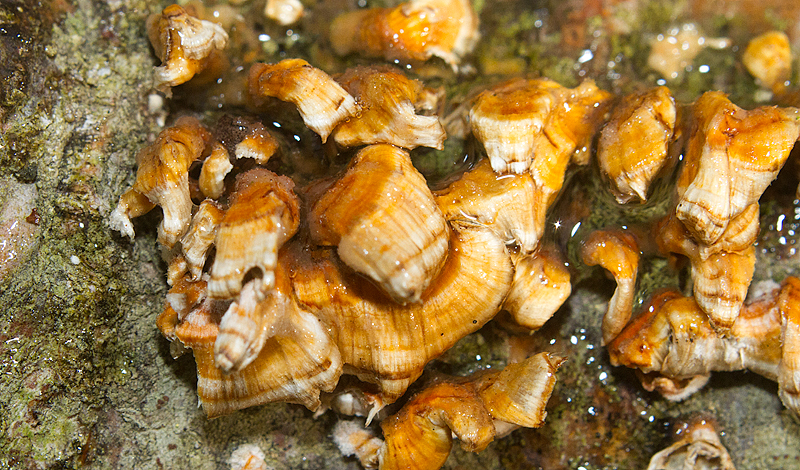
Above: Crowded Parchment (Stereum complicatum) found during the Chino Farms BioBlitz (4/27/2013). Identified by Lance Biechele. Note that it turns bright orange when wet.
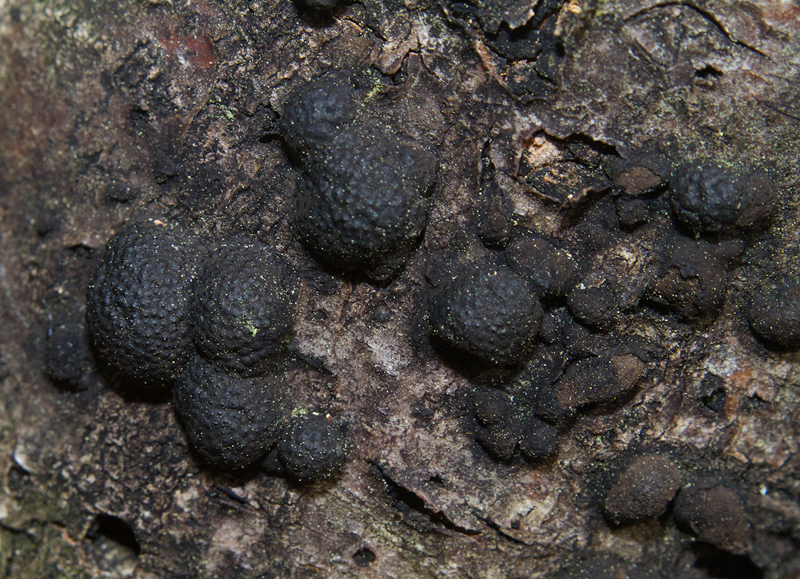
Above: Hypoxylon_fragiforme found during the Chino Farms BioBlitz (4/27/2013). Identified by Lance Biechele.
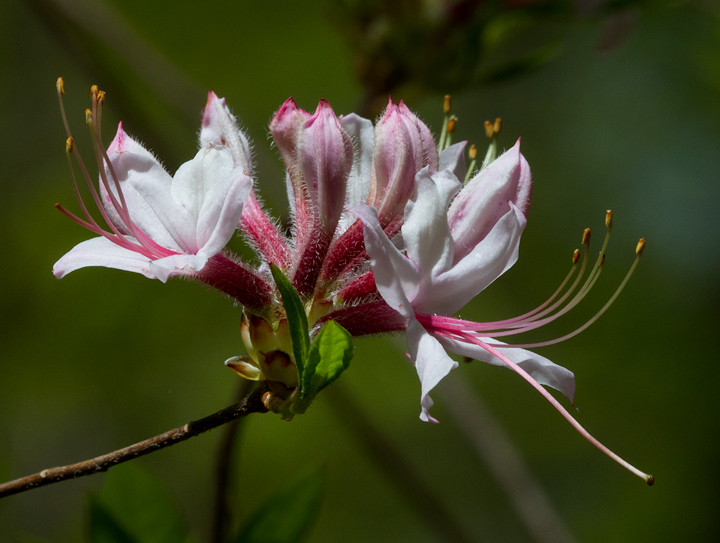
Above: Pinxter Flower blooming in Queen Anne's Co., Maryland (4/27/2013).
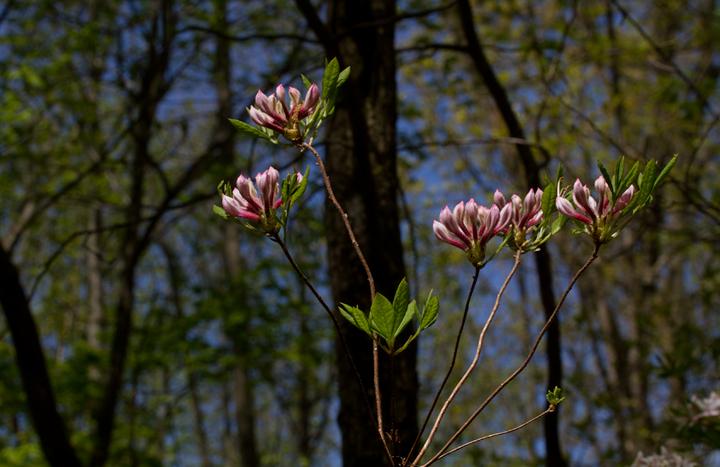
Above: Pinxter Flower blooming in Queen Anne's Co., Maryland (4/27/2013).
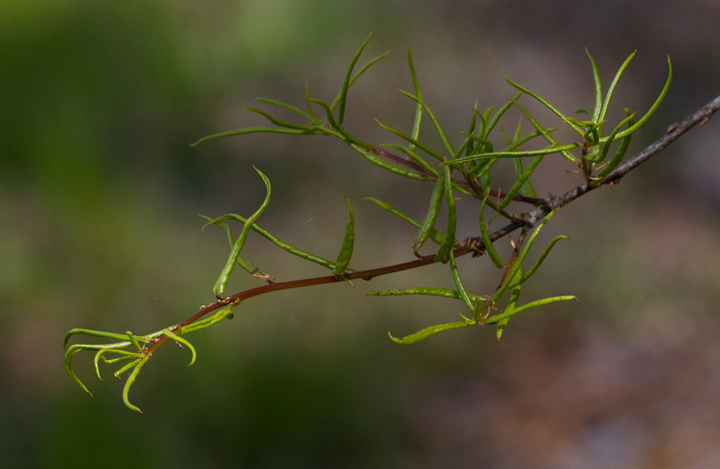
Above: Emergining leaves of Willow Oak in spring on Chino Farms, Queen Anne's Co., Maryland (4/27/2013).
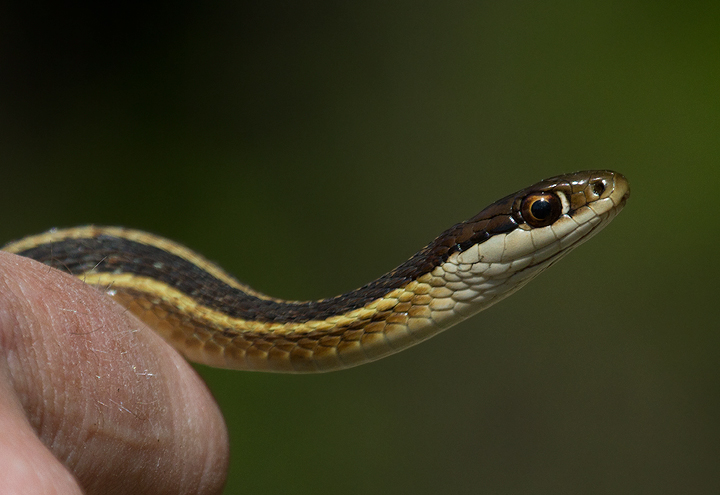
Above: An Eastern Ribbon Snake found on the Chino Farms BioBlitz (4/27/2013). Note the snake's narrow head and especially the white area in front of the eye. Ribbon Snakes also have thinner bodies, longer tails (1/3 vice 1/4 or less of body length), and a slightly different stripe pattern.
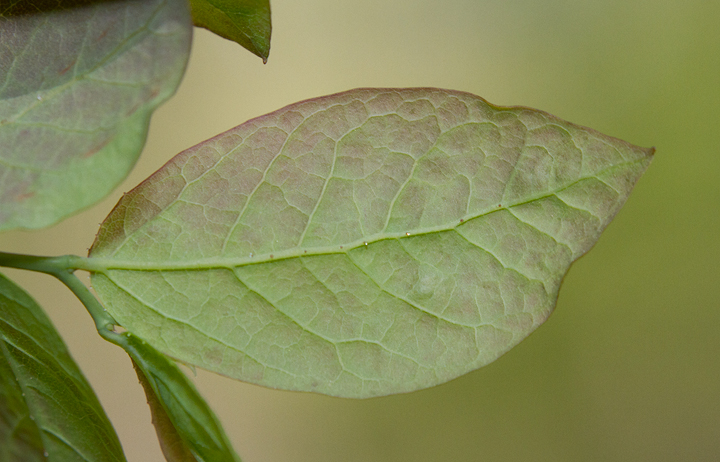
Above: Underside of a spring Blue Ridge Blueberry leaf in Queen Anne's Co., Maryland (4/27/2013).
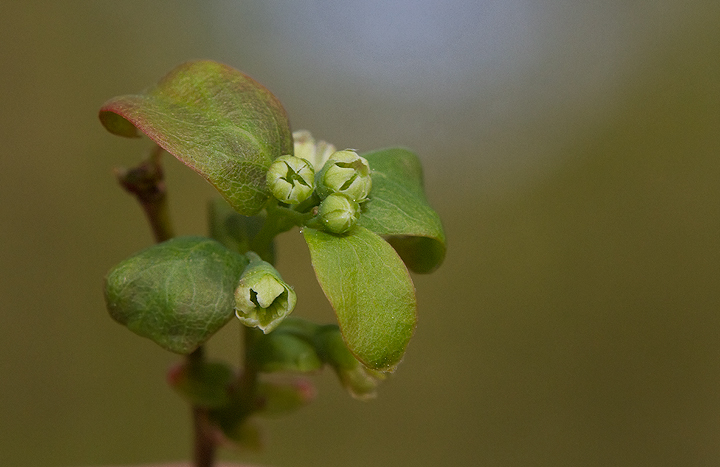
Above: Blue Ridge Blueberry flowers in Queen Anne's Co., Maryland (4/27/2013).
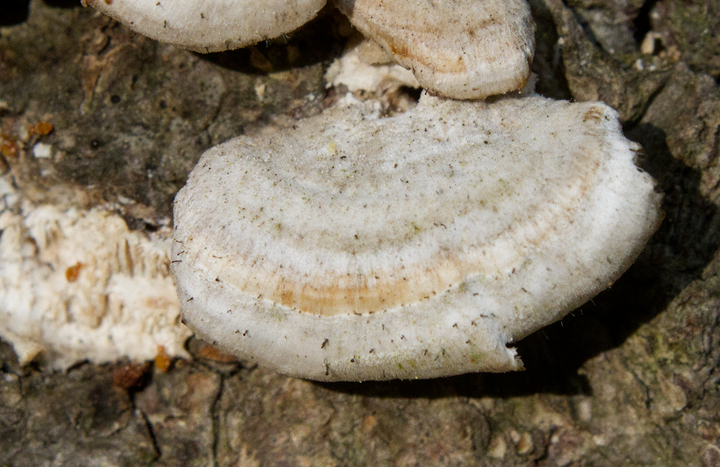
Above: Violet Tooth found during the Chino Farms BioBlitz (4/27/2013). Found by Lance Biechele.
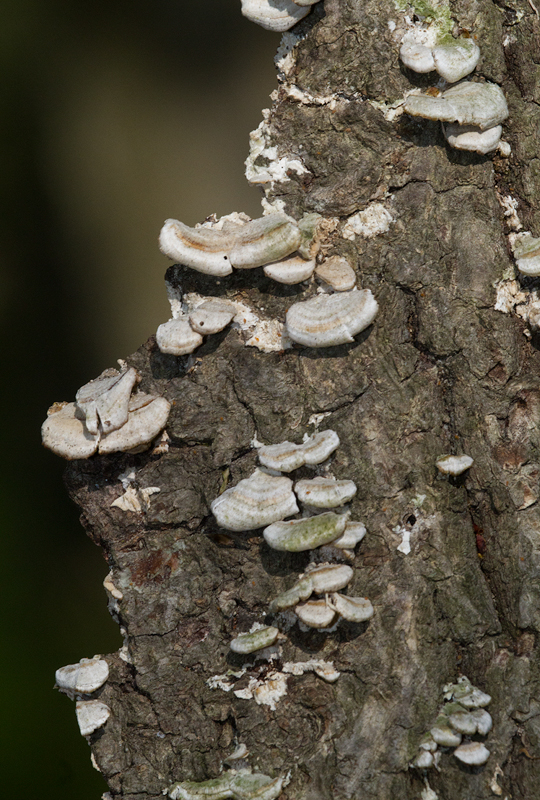
Above: Violet Tooth found during the Chino Farms BioBlitz (4/27/2013). Found by Lance Biechele.
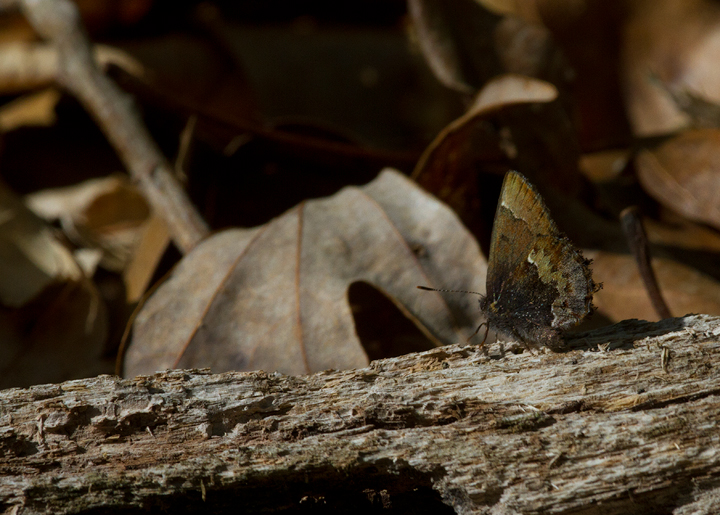
Above: A Henry's Elfin found during the Chino Farms BioBlitz (4/27/2013). First Queen Anne's Co. record found by Brighton, Feild, Biechele, Hubick.
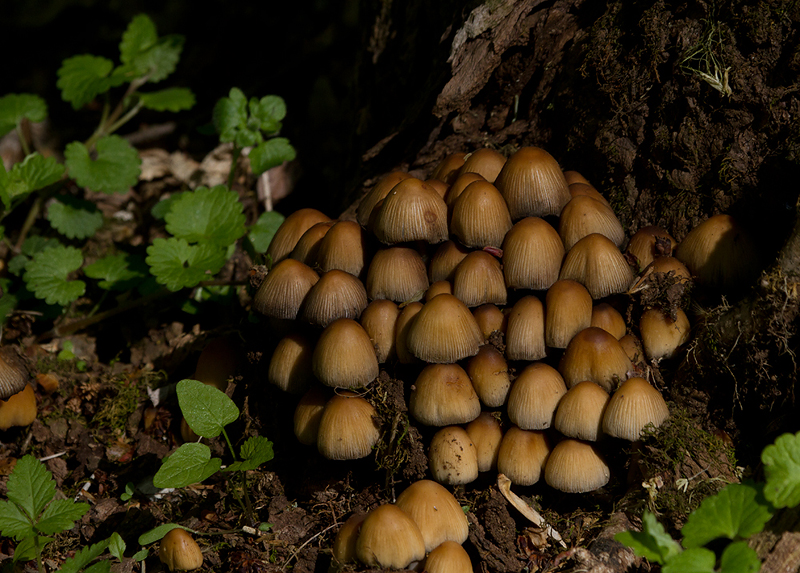
Above: Glistening Inkcap in Washington Co., Maryland (4/25/2013). Identified by Lance Biechele.
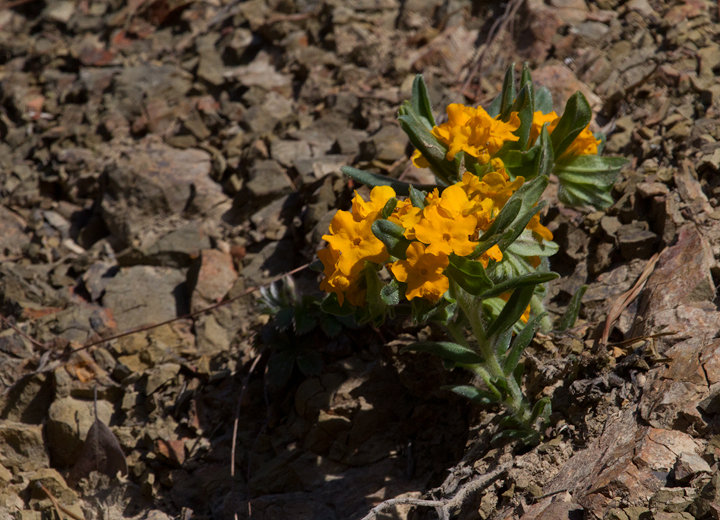
Above: Hoary Puccoon blooming in Allegany Co., Maryland (4/25/2013).
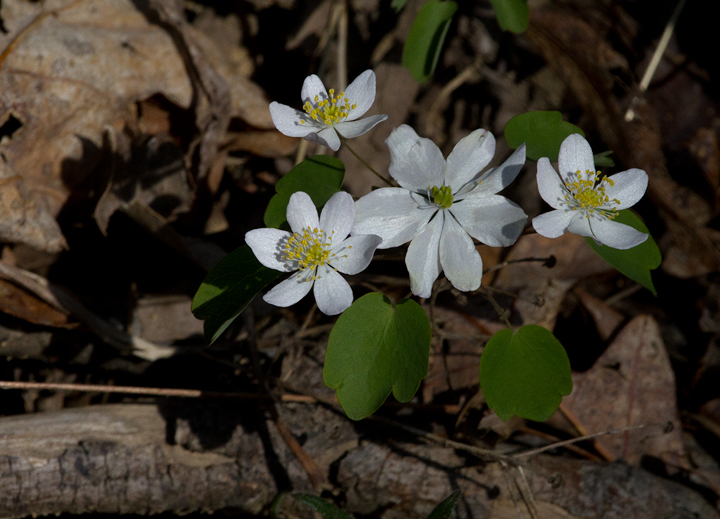
Above: Rue Anemone blooming in Green Ridge State Forest, Allegany Co., Maryland (4/25/2013).
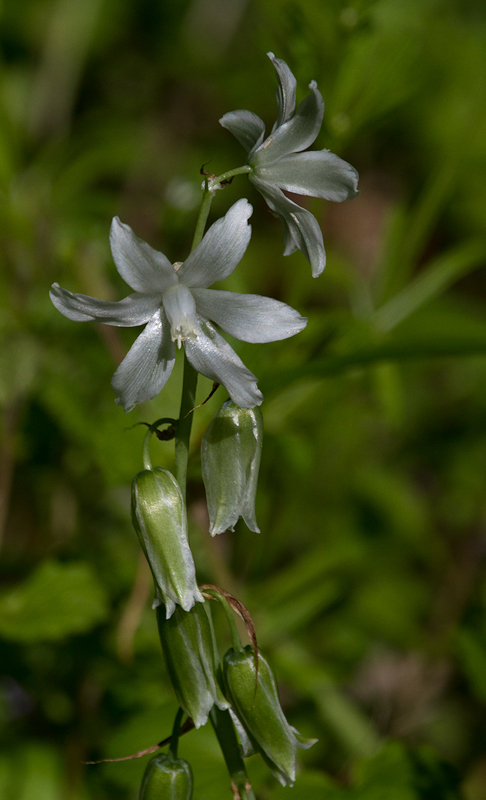
Above: Drooping Star of Bethlehem blooming in Washington Co., Maryland (4/25/2013).
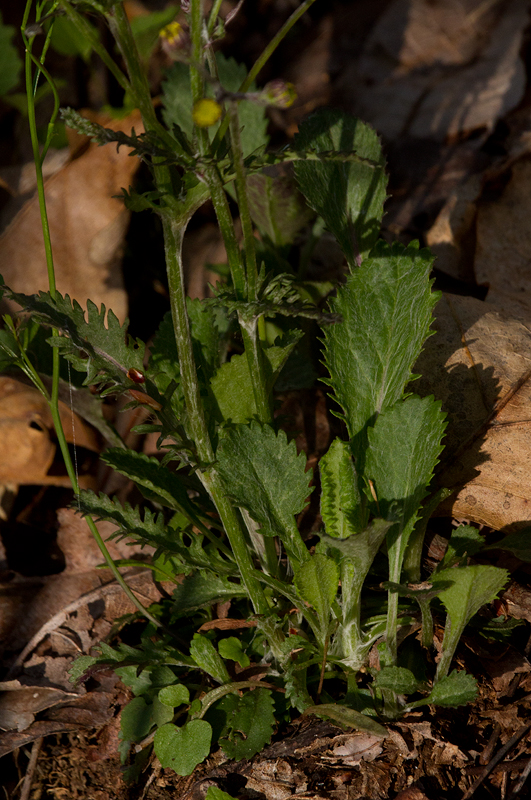
Above: Basal leaves of Round-leaved Ragwort in Green Ridge State Forest, Allegany Co., Maryland (4/25/2013).
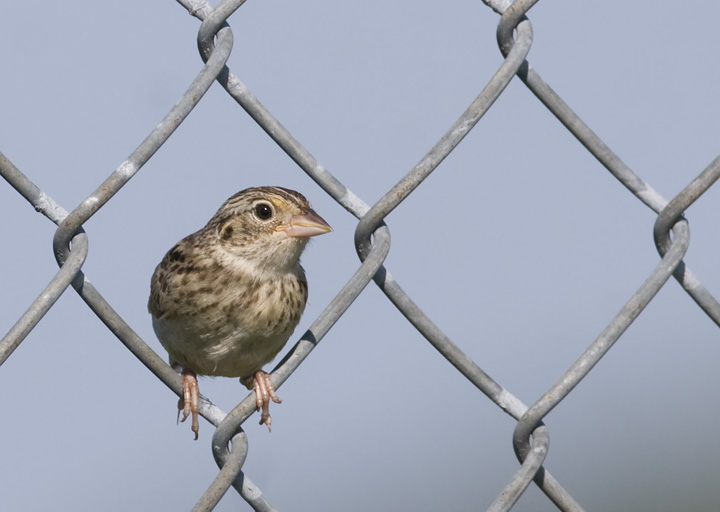
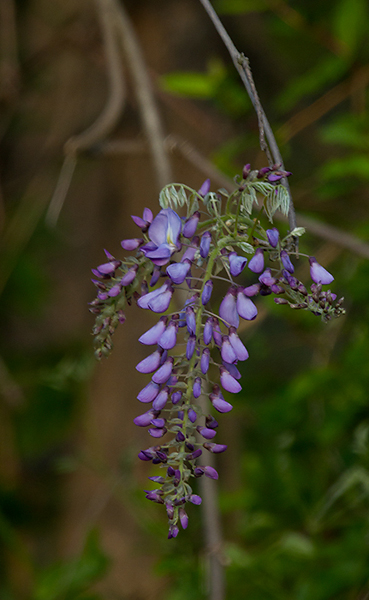
Above: Chinese Wisteria blooming in Anne Arundel Co., Maryland (4/24/2013). Unlike our native species, Both invasive Wisteria species bloom in April before their leaves return. Chinese Wisteria coils clockwise around trees, while Japanese Wisteria coils counter-clockwise. Japanese Wisteria also has longer flower clusters. Read more.
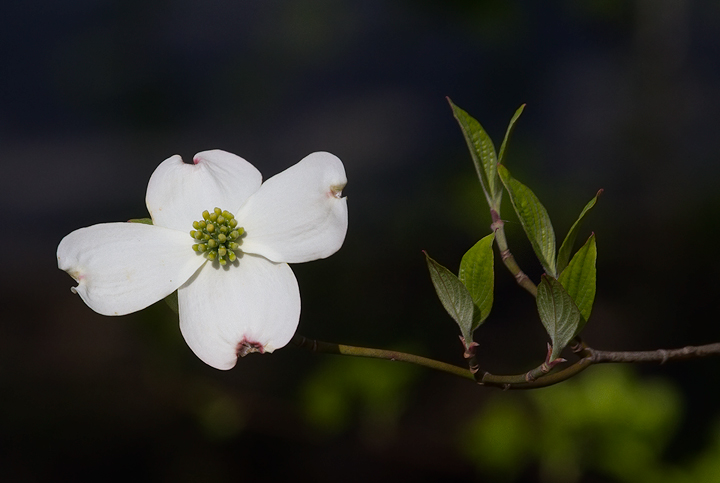
Above: Flowering Dogwood blooming in northern Anne Arundel Co., Maryland (4/23/2013).
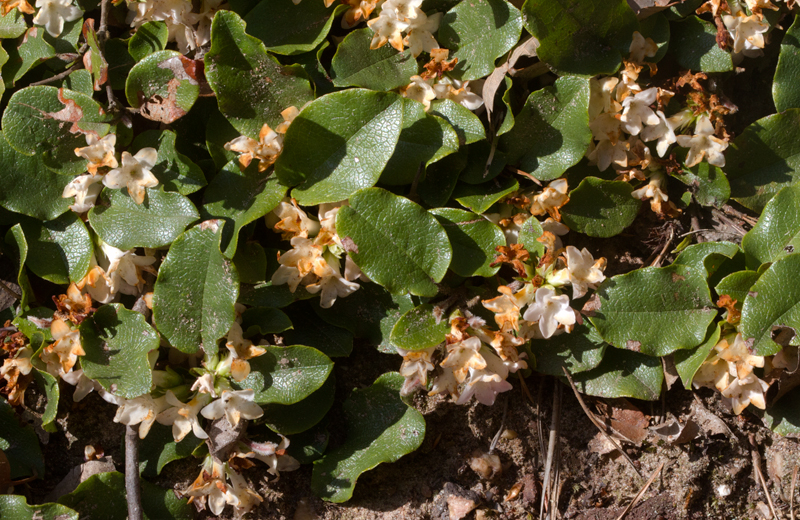
Above: Trailing Arbutus flowers past their prime in northern Anne Arundel Co., Maryland (4/23/2013).
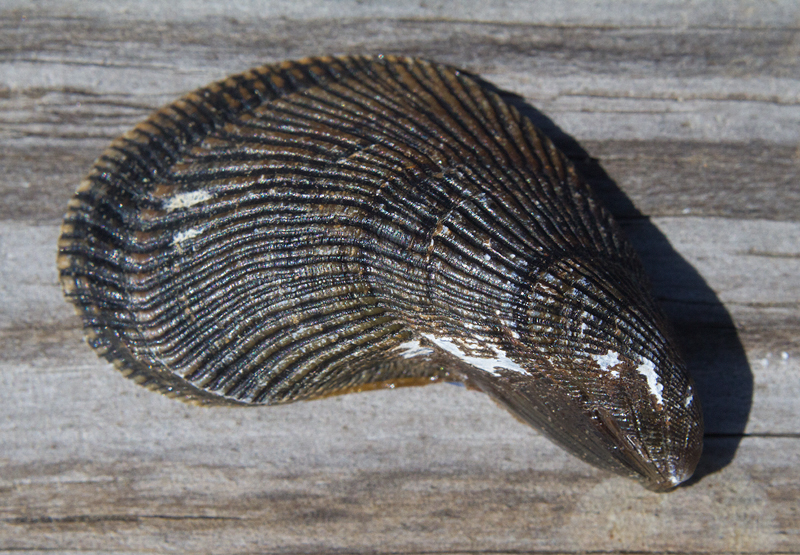
Above: A Hooked Mussel shell at Fort Smallwood, Anne Arundel Co., Maryland (4/20/2013).
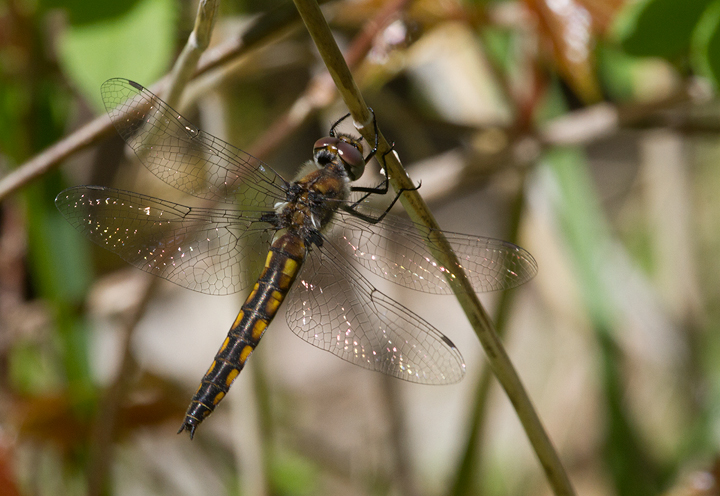
Above: A Common Baskettail in Anne Arundel Co., Maryland (4/20/2013).
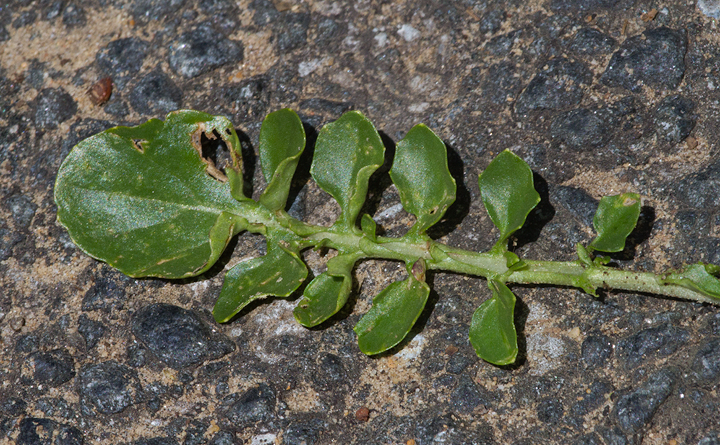
Above: A basal leaf of Early Yellowrocket in Anne Arundel Co., Maryland (4/20/2013). Basal leaves have 8 to 40 lobes.
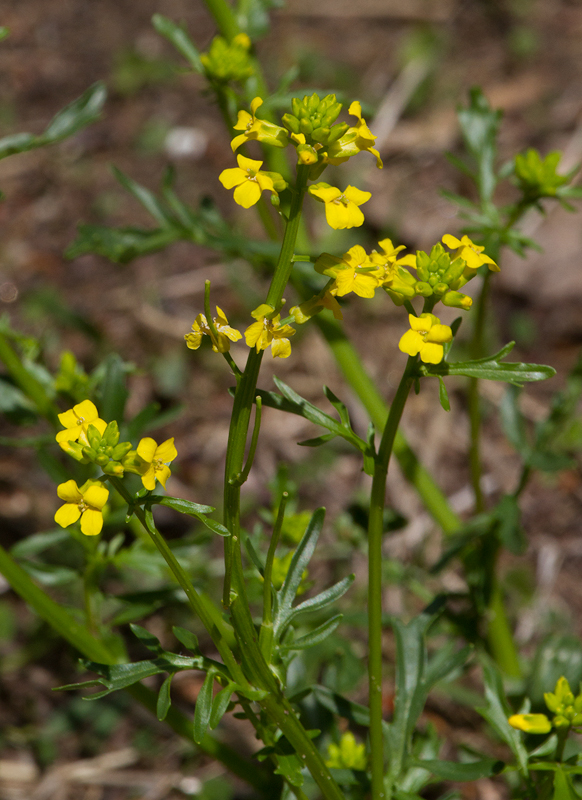
Above: Early Yellowrocket blooming in Anne Arundel Co., Maryland (4/20/2013).
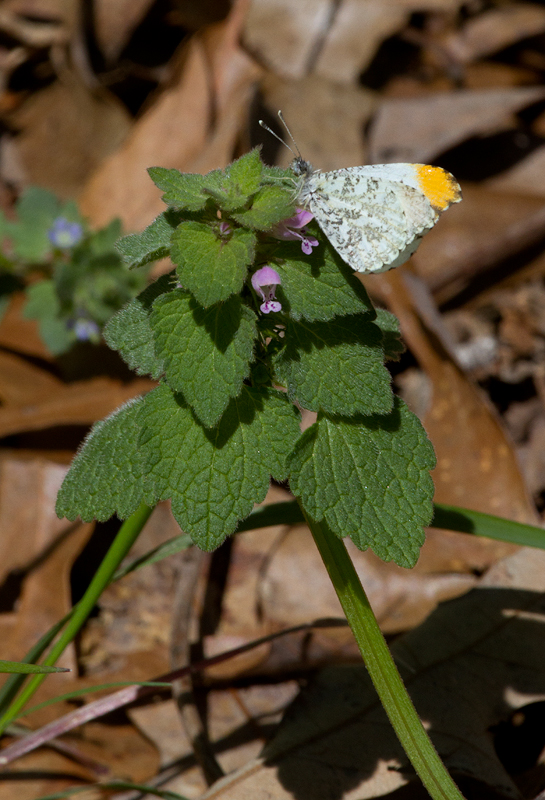
Above: A Falcate Orangetip on Purple Deadnettle in northern Anne Arundel Co., Maryland (4/20/2013).
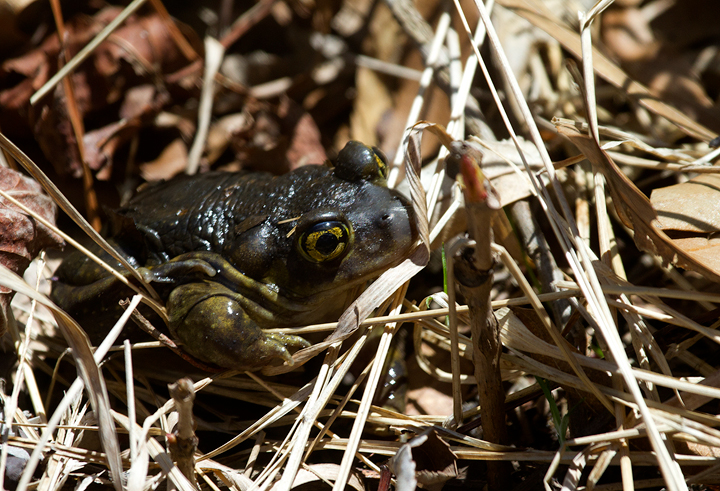
Above: An Eastern Spadefoot from a local population in northern Anne Arundel Co., Maryland (4/20/2013).
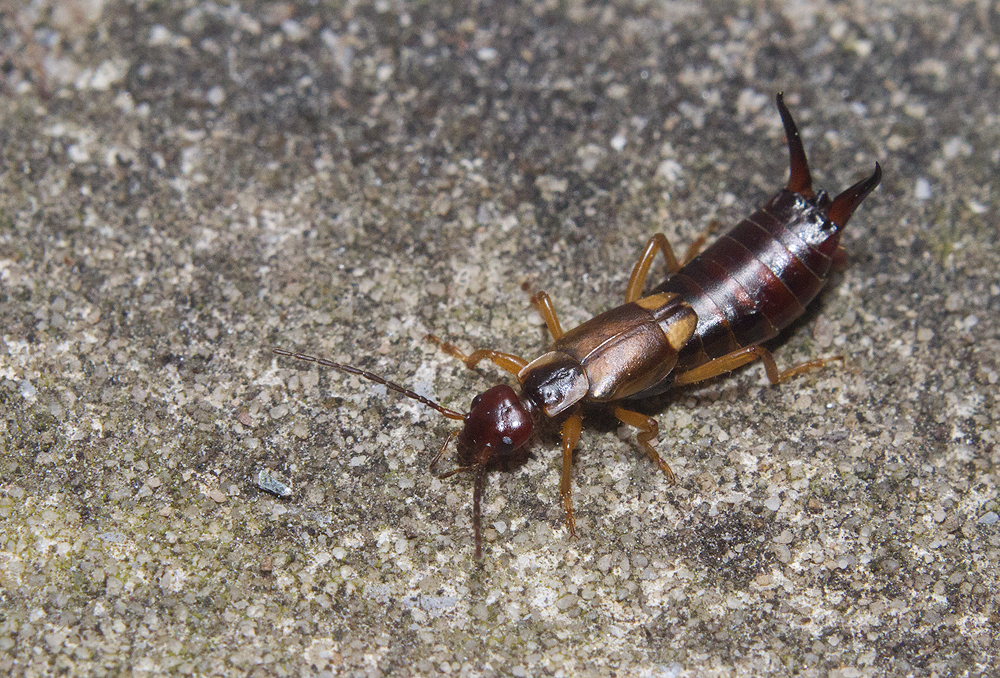
Above: A female European Earwig in Anne Arundel Co., Maryland (4/18/2013).
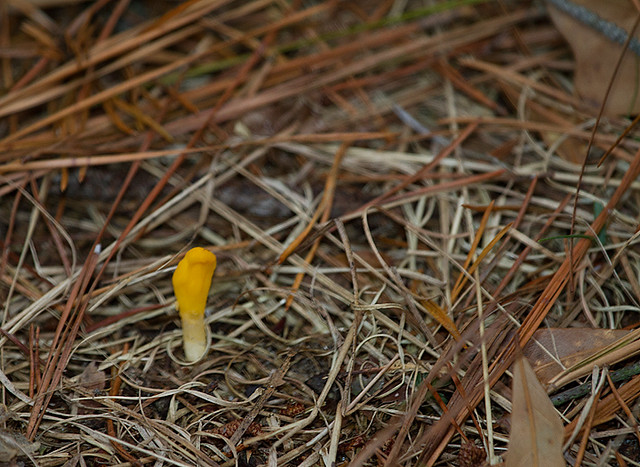
Above: Swamp Beacon in Wicomico Co., Maryland (1/1/2013).
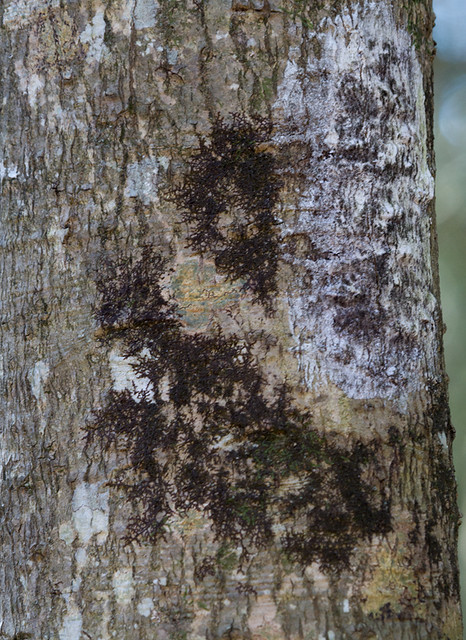
Above: Frullania asagrayana in Worcester Co., Maryland (1/19/2013).
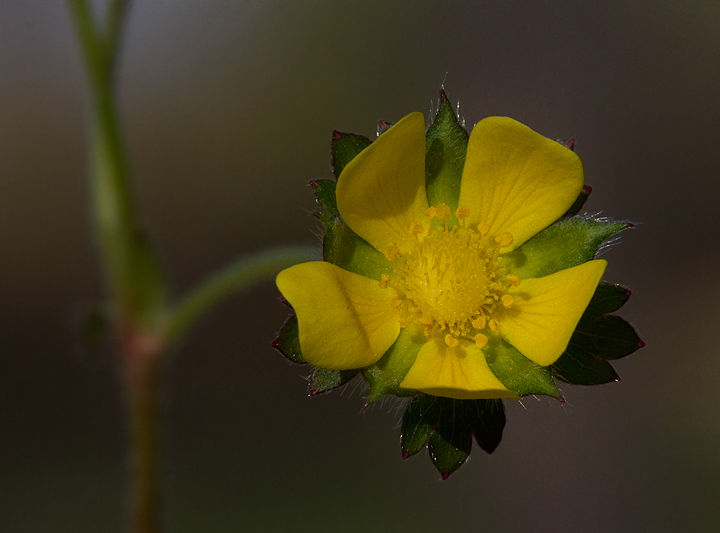
Above: Indian Strawberry blooming at Fort Smallwood Park, Maryland (4/16/2013).
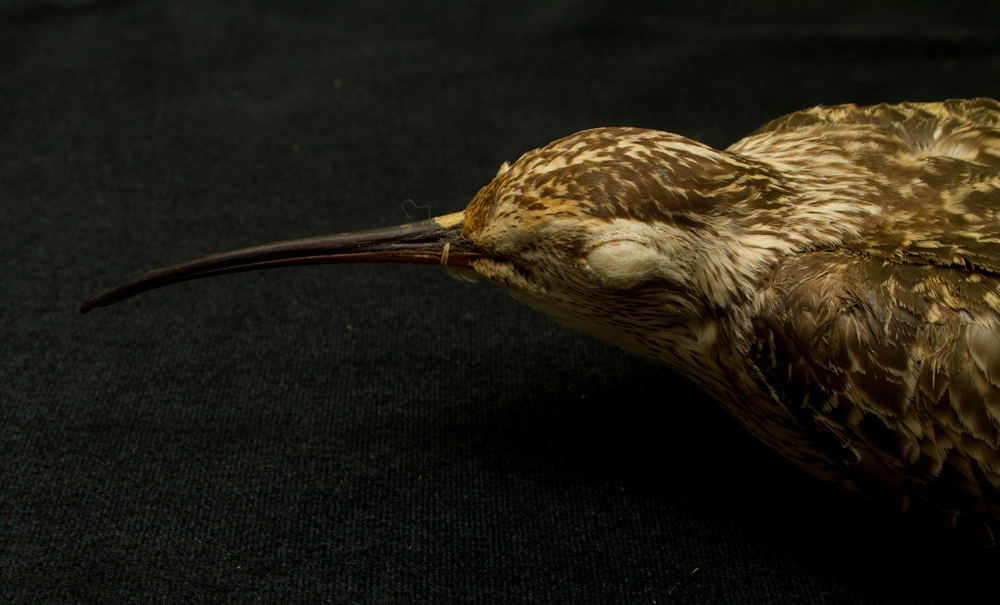
Above: An Eskimo Curlew specimen at the Smithsonian Institution, Division of Birds in Washington, D.C. (4/13/2013). Eskimo Curlew was a fall visitor to Maryland en route to its wintering grounds in South America, but its population was decimated by market hunters, habitat loss on its wintering grounds, and the extinction of a primary spring food source - all caused by human short-sightedness. It is now almost certainly extinct, but some optimists maintain hope.
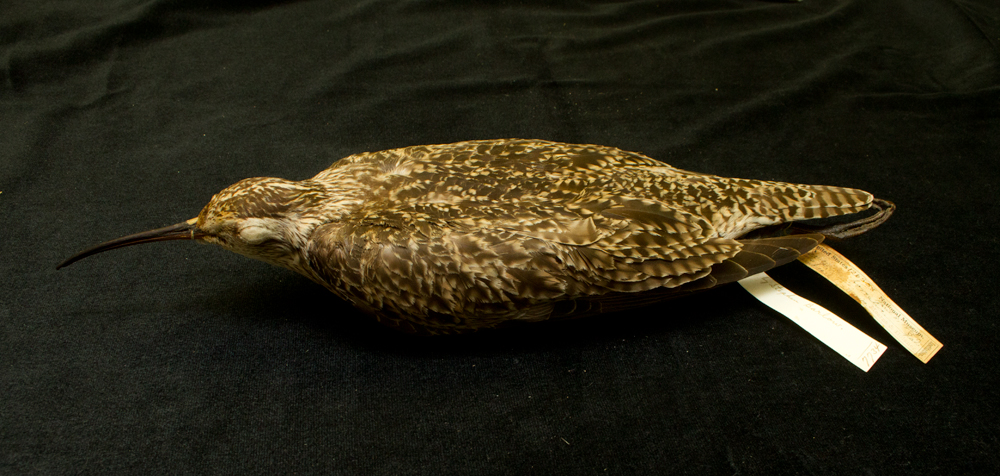
Above: An Eskimo Curlew specimen at the Smithsonian Institution, Division of Birds in Washington, D.C. (4/13/2013). Kaufman (1996) stated, "A comparison of dates and migratory patterns has led some to conjecture that Eskimo Curlews and American Golden-Plover are the shorebirds that attracted the attention of Christopher Columbus to nearby land after 65 days at sea and out of sight of land on his first voyage. In the 1800s millions of Eskimo Curlews followed migration routes from the present Yukon and Northwest Territories, flying east along the northern shore of Canada, then south over the Atlantic Ocean to South America in the winter. When returning to North America, they would fly north through the Great Plains."
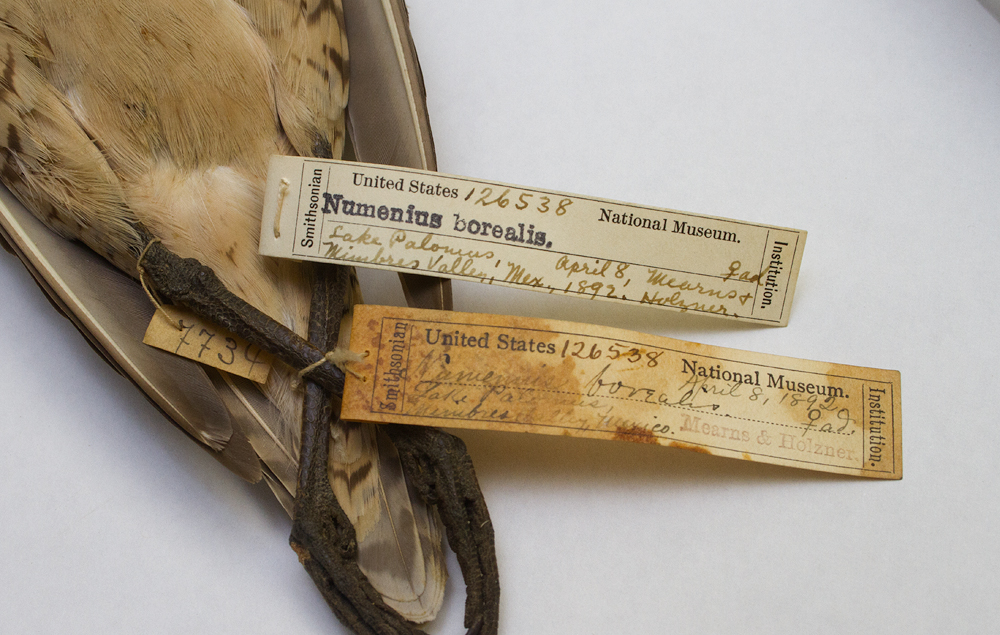
Above: An Eskimo Curlew specimen at the Smithsonian Institution, Division of Birds in Washington, D.C. (4/13/2013). This individual was collected at Lake Palonius in Mexico on April 8, 1892. US Geological Survey (2013) notes: "The role that the Eskimo Curlew may have played in leading Europeans to the New World is narrated in part as follows: On October 7, 1492, 'immense flocks of birds, far more than they had seen before, passed overhead all day long, coming always from the north and heading always towards the southwest.' On this, his 65th day at sea, Columbus decided to change course and follow the birds. 'Columbus's journal tells us that some birds the sailors snared were plainly field birds that could not possibly find rest on the water.' 'Although the mariners did not know what the non-stop birds were, that statement, the date and direction of flight at that time and in that place identify them almost certainly as golden plovers and Eskimo curlews, the only birds [not so] having the speed and power to make the oversea flight of 2,500 miles or more from Labrador in the north to the region of the Orinoco River [in Venezuela]' (Tooke 1961). On 12 October Columbus landed on San Salvador (Island)."
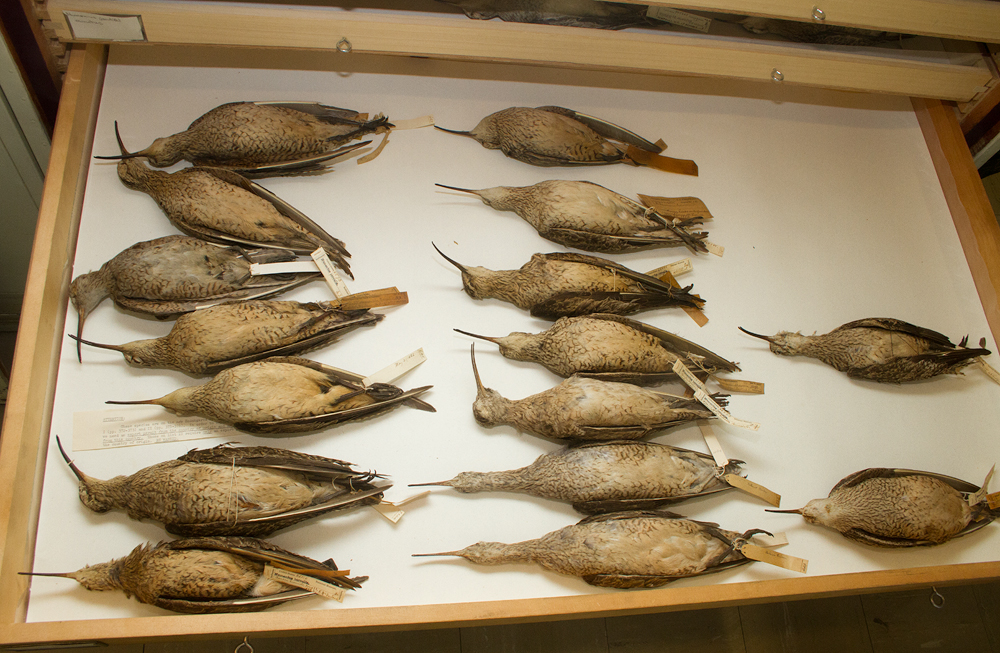
Above: The 16 Eskimo Curlew specimens at the Smithsonian Institution, Division of Birds in Washington, D.C. (4/13/2013).
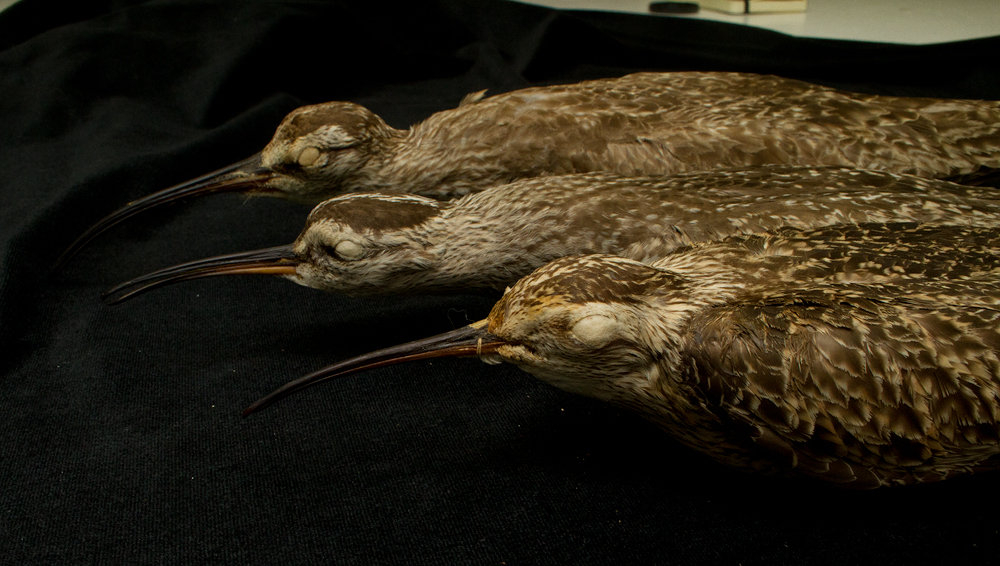
Above: Eskimo Curlew (front) compared to immature Whimbrel (middle) and adult Whimbrel (back). Photographed at the Smithsonian Institution, Division of Birds in Washington, D.C. (4/13/2013).
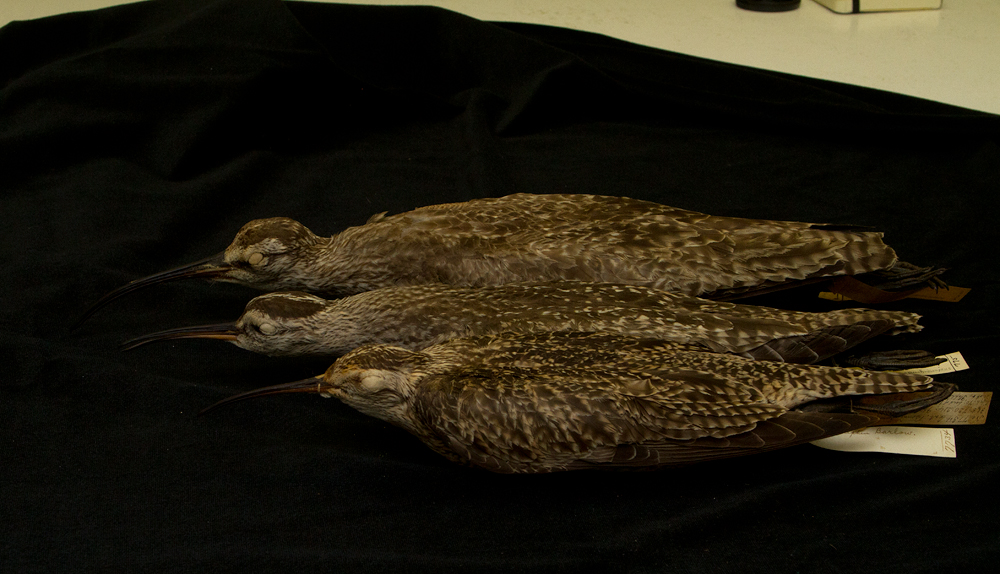
Above: Eskimo Curlew (front) compared to immature Whimbrel (middle) and adult Whimbrel (back). Photographed at the Smithsonian Institution, Division of Birds in Washington, D.C. (4/13/2013).
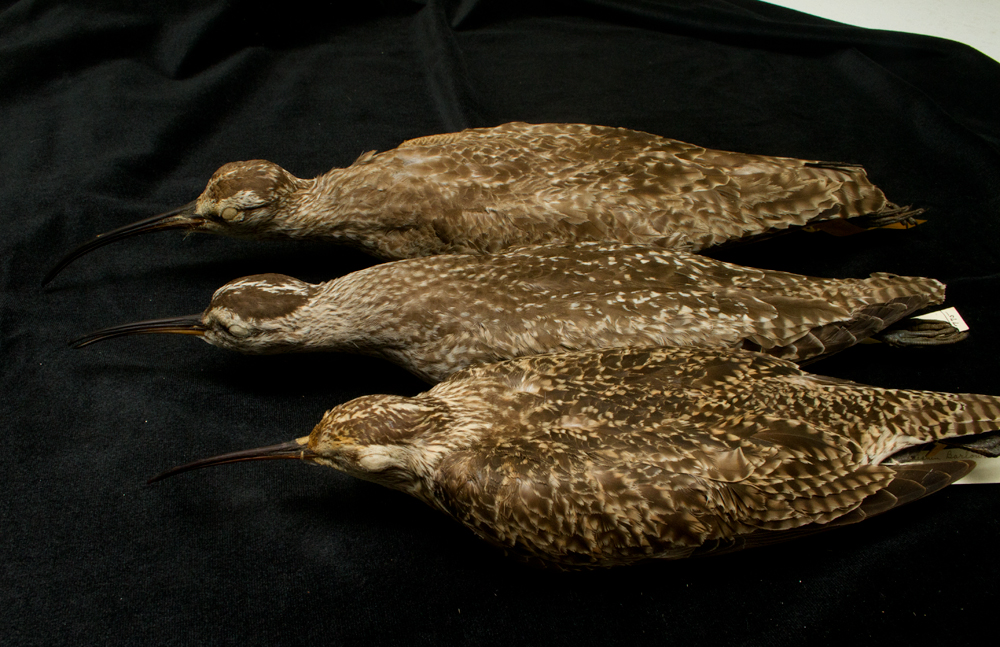
Above: Eskimo Curlew (front) compared to immature Whimbrel (middle) and adult Whimbrel (back). Photographed at the Smithsonian Institution, Division of Birds in Washington, D.C. (4/13/2013).
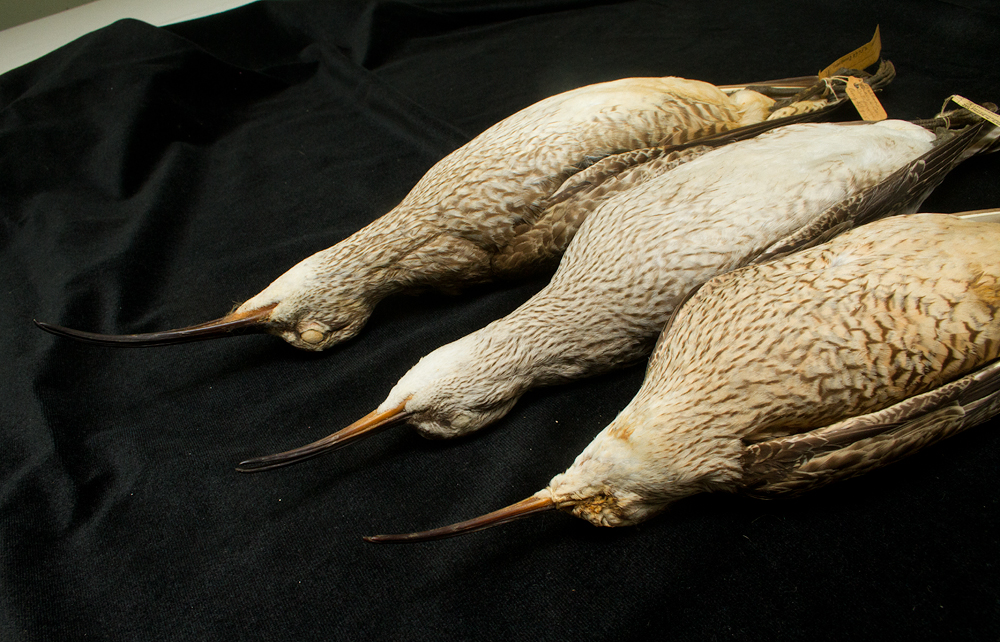
Above: Eskimo Curlew (front) compared to immature Whimbrel (middle) and adult Whimbrel (back). Photographed at the Smithsonian Institution, Division of Birds in Washington, D.C. (4/13/2013).
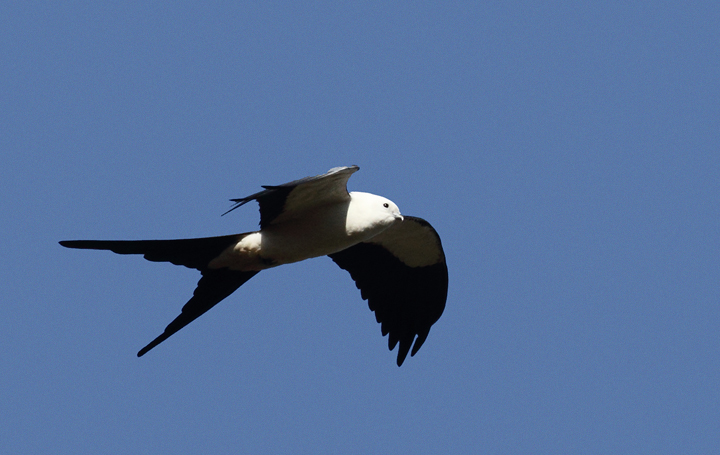
Above: A Swallow-tailed Kite returning to the Everglades in late February (2/26/2010).

Above: A Field Pansy photographed at night in Pasadena, Maryland (4/11/2013).
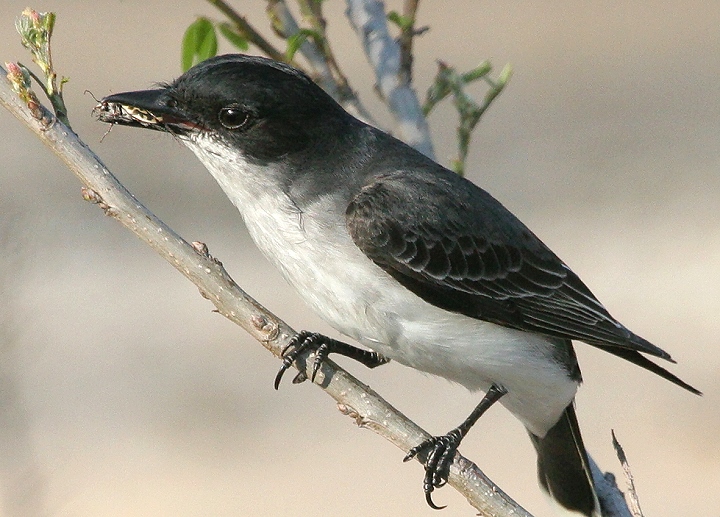
Above: An Eastern Kingbird with tiger beetle prey at Fort Smallwood Park, Anne Arundel Co., Maryland (4/29/2007).
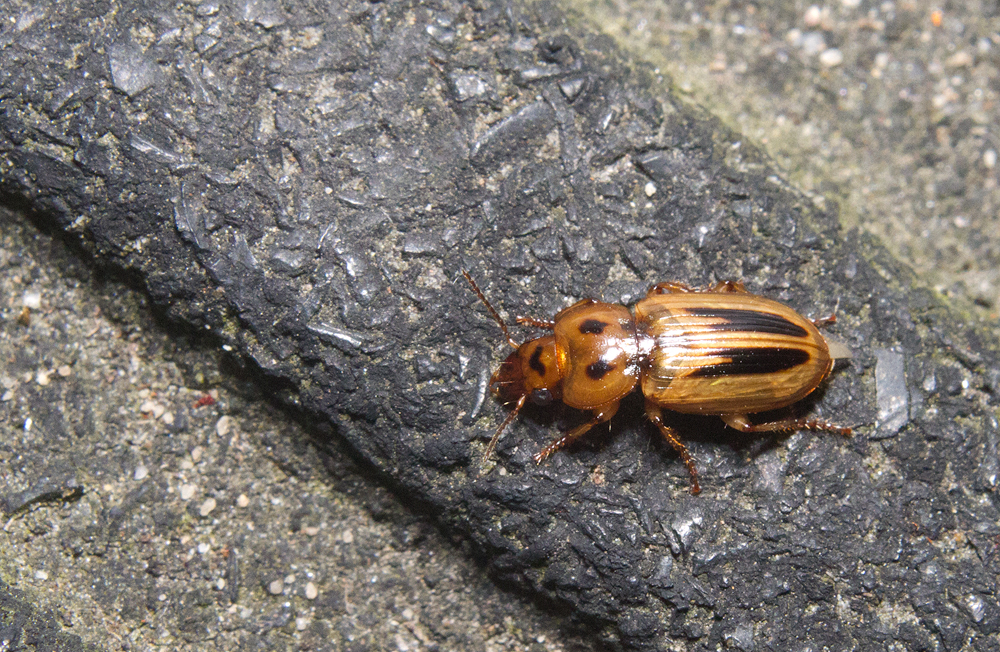
Above: A ground beetle, Stenolophus lineola, in Pasadena, Maryland (4/10/2013).
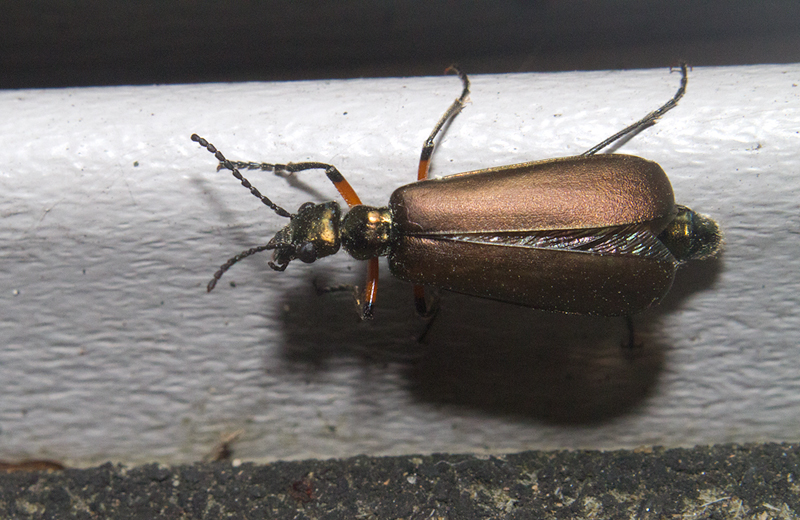
Above: A Bronze Blister Beetle in Pasadena, Maryland (4/10/2013).
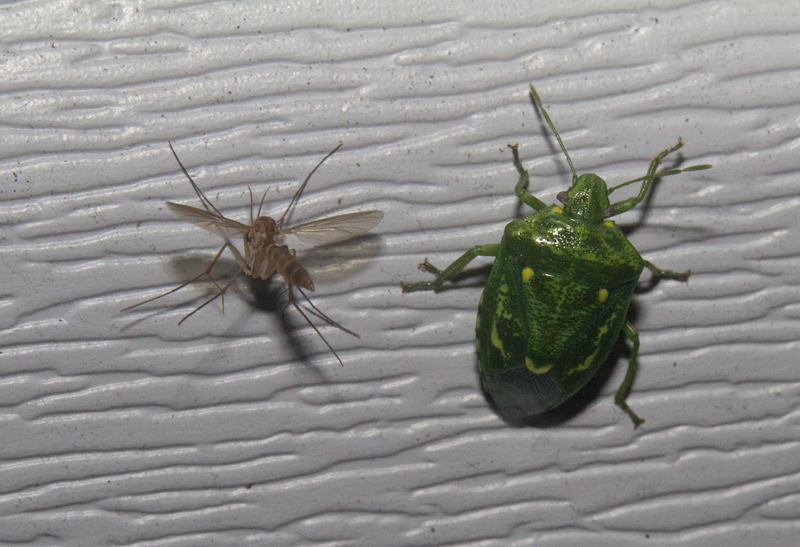
Above: A Juniper Stink Bug in Anne Arundel Co., Maryland (4/10/2013).
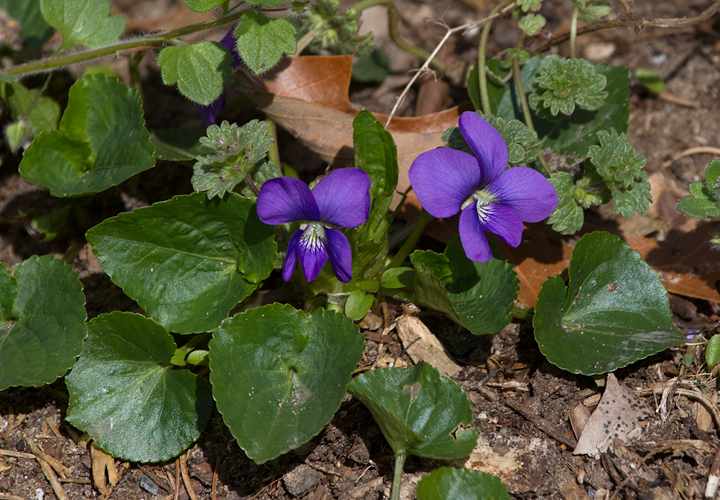
Above: Common Blue Violets in Pasadena, Maryland (4/7/2013).
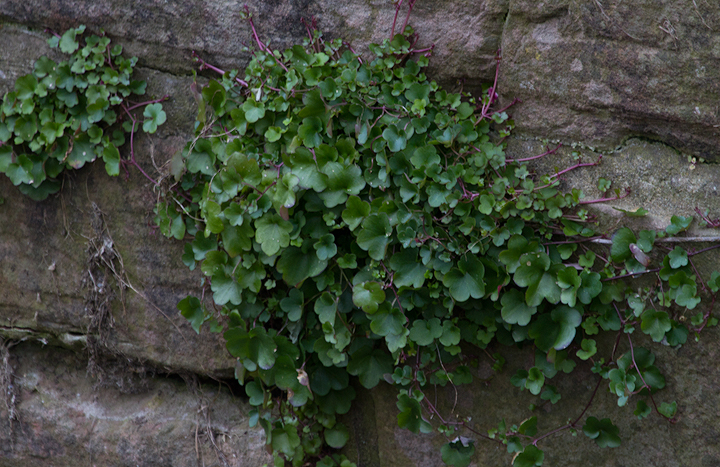
Above: Kenilworth Ivy growing at Violette's Lock, Montgomery Co., Maryland (3/17/2013).
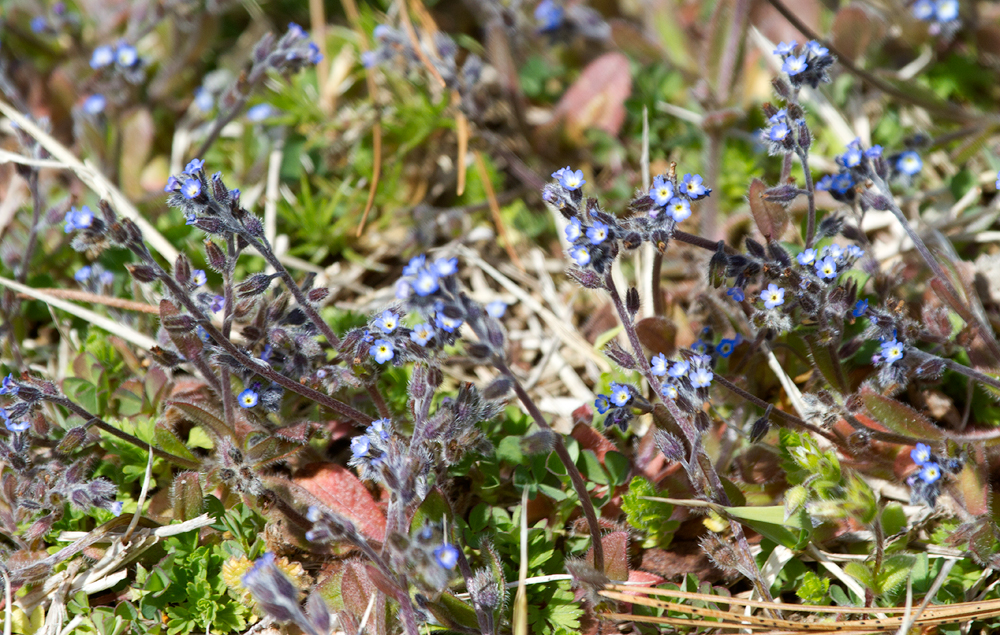
Above: Strict Forget-me-not in Anne Arundel Co., Maryland (4/7/2013).
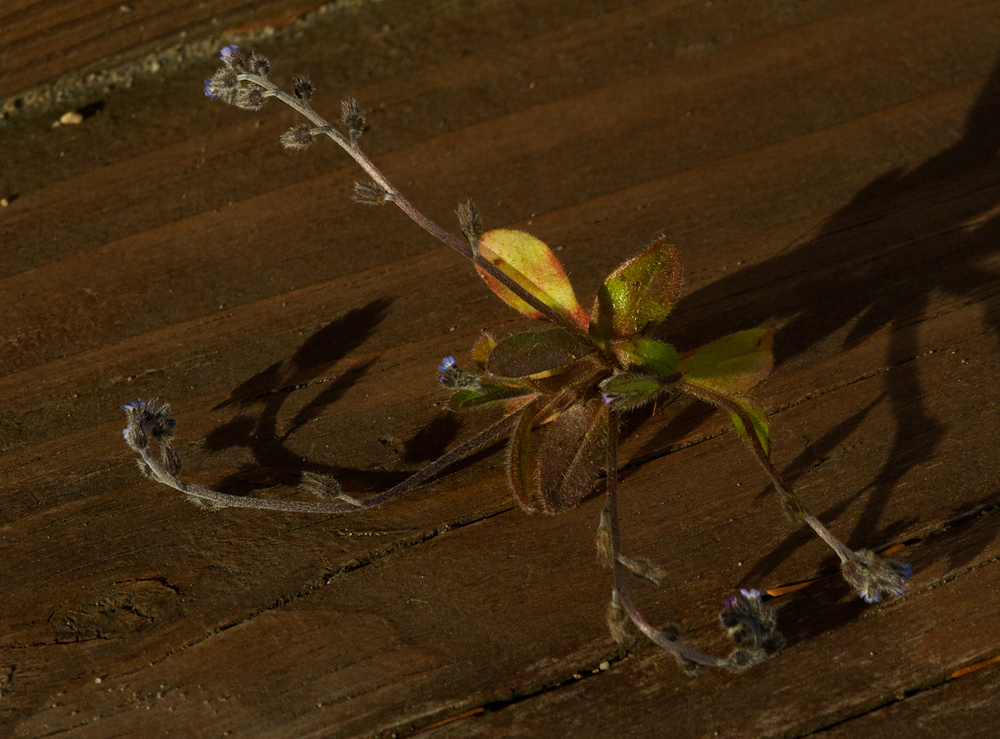
Above: Strict Forget-me-not collected in Anne Arundel Co., Maryland (4/7/2013).
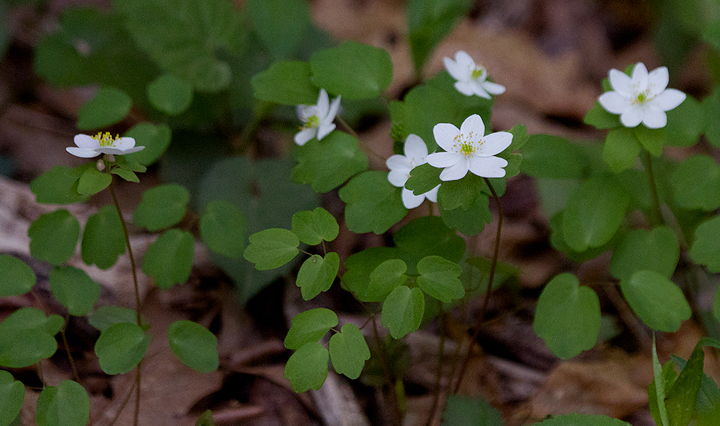
Above: Rue Anemone blooming in Green Ridge SF, Allegany Co., Maryland (4/23/2010).
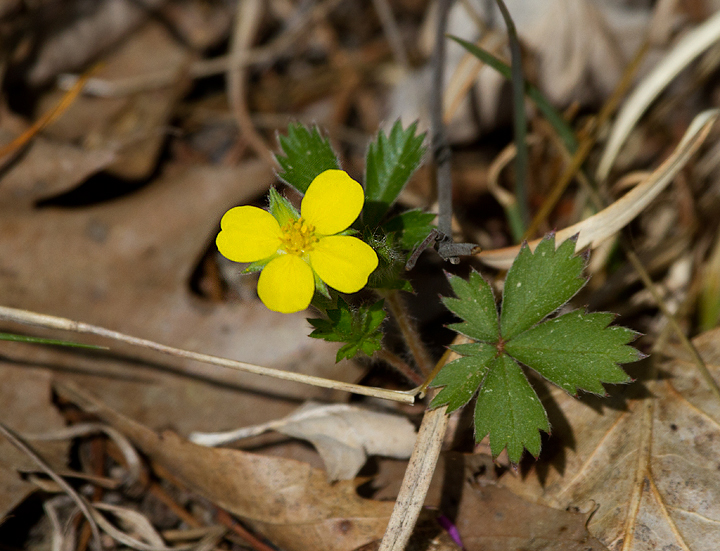
Above: Dwarf Cinquefoil in Green Ridge State Forest, Allegany Co., Maryland (4/23/2010). Note the silvery hairy stem and lack of teeth in the lower half of the leaves.

